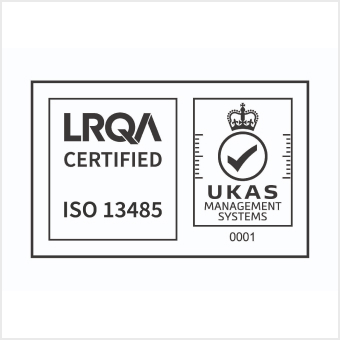Fourier Transform Infrared Spectroscopy
Part 1: Introduction to Fourier Transform Infrared Spectroscopy
- Overview of Fourier Transform Infrared Spectroscopy (FTIR)
- Definition and brief history of FTIR.
- Development of FTIR spectroscopy: From dispersive to Fourier transform technology.
- The role of FTIR in analytical chemistry and material science.
- Comparison of FTIR with other spectroscopy techniques (e.g., UV-Vis, NMR, XPS).
- Principles of FTIR Spectroscopy
- Basic theory of infrared radiation and its interaction with matter.
- Vibrational modes in molecules: Stretching, bending, and torsional motions.
- The relationship between molecular vibrations and infrared absorption.
- Fourier transform mathematics: How it converts raw data into a usable spectrum.
- Transmission vs. Reflectance vs. Attenuated Total Reflectance (ATR) modes in FTIR.
- FTIR Instrumentation
- Description of the key components of an FTIR spectrometer:
- Infrared light source
- Interferometer (Michelson interferometer)
- Sample holder (e.g., ATR, transmission cells)
- Detector (e.g., DTGS, MCT)
- The role of each component in the FTIR process.
- Different types of FTIR instruments and configurations.
- Recent advancements in FTIR instrumentation: Miniaturization, portable FTIR devices.
Part 2: Sample Preparation and Analytical Techniques
- Sample Preparation for FTIR Testing
- Techniques for preparing samples: Solid, liquid, and gas-phase samples.
- Sample handling in FTIR: Pressing solids into pellets, thin films, or powders.
- Liquid sample analysis: Using liquid cells and transmission techniques.
- Gas-phase FTIR: Sample chambers, sealed cells, and real-time monitoring.
- Importance of sample purity and handling to avoid contamination or interference.
- FTIR Data Acquisition
- The process of acquiring spectra: Scanning range, resolution, and scan speed.
- Overview of typical infrared spectral ranges (Mid-IR, Near-IR, Far-IR).
- Signal-to-noise ratio: How to optimize for high-quality data.
- The effect of resolution on data quality and analysis.
- Quantitative and Qualitative FTIR Analysis
- Qualitative analysis: Identifying functional groups, molecular structures, and chemical bonds.
- Quantitative FTIR: Calibration curves, internal standards, and concentration analysis.
- Use of FTIR in identifying unknown compounds and contaminants in complex mixtures.
- Limitations of FTIR in quantitative analysis and the importance of complementary techniques.
Part 3: Advanced FTIR Techniques and Applications
- Attenuated Total Reflectance (ATR) FTIR
- Principle and operation of ATR FTIR.
- Advantages of ATR in analyzing surfaces, thin films, and heterogeneous samples.
- The role of the depth of penetration in ATR.
- Applications of ATR FTIR in material science, polymers, and coatings.
- Diffuse Reflectance FTIR
- How diffuse reflectance FTIR works: Sampling powders and rough surfaces.
- Differences between transmission, ATR, and diffuse reflectance modes.
- Applications in analyzing solid materials, minerals, and soil samples.
- FTIR Imaging and Mapping
- Introduction to FTIR microscopy and imaging: High spatial resolution.
- FTIR imaging in material science, biological studies, and polymer analysis.
- Advantages of FTIR imaging in identifying spatial distributions of chemical components.
- Time-Resolved FTIR
- Principle of time-resolved FTIR spectroscopy.
- Applications in studying kinetic processes, reaction mechanisms, and molecular dynamics.
- Case studies in catalysis, polymers, and biological systems.
- Micro-Fourier Transform Infrared Spectroscopy (Micro-FTIR)
- The role of micro-FTIR in analyzing microscopic samples and small regions of materials.
- Applications in the semiconductor industry, forensics, and high-precision materials analysis.
- Combining micro-FTIR with imaging techniques for detailed molecular characterization.
Part 4: Applications of FTIR Spectroscopy
- FTIR in Material Science
- Application of FTIR in studying polymers: Characterization of functional groups, molecular weight, and crystallinity.
- Use of FTIR in the analysis of composite materials, coatings, and adhesives.
- FTIR in nanomaterials research: Monitoring surface chemistry and nanoparticle interactions.
- FTIR in Environmental and Analytical Chemistry
- Applications in monitoring air quality: Identifying pollutants and greenhouse gases.
- Water quality testing: Detection of organic contaminants and pollutants in water.
- Soil and waste analysis: Detection of heavy metals and organic compounds in environmental samples.
- FTIR in Pharmaceuticals and Biotechnology
- Use of FTIR in pharmaceutical formulation: Identifying excipients, APIs, and stability studies.
- Applications in quality control and assurance in pharmaceutical production.
- FTIR for biotechnology: Protein folding, peptide analysis, and pharmaceutical process monitoring.
- FTIR in Forensic Science
- Application of FTIR in forensic investigations: Drug analysis, toxicology, and fiber identification.
- Identification of unknown substances in crime scene investigation.
- Using FTIR for evidence analysis in forensics and criminal investigations.
- FTIR in Food and Agriculture
- FTIR for food quality control: Detection of adulterants, contamination, and preservatives.
- Applications in agricultural science: Analysis of soil, fertilizers, and plant materials.
- FTIR for monitoring food processing and storage conditions.
- FTIR in Polymers and Plastics
- FTIR as a tool for polymer characterization: Chain structure, additives, and degradation.
- The role of FTIR in polymer research and development.
- FTIR in recycling and waste management: Identification of plastic types and contamination.
- FTIR in Art Conservation and Archaeology
- Application of FTIR in the analysis of pigments, dyes, and materials in art objects.
- FTIR as a non-destructive method for studying cultural heritage artifacts.
- Use of FTIR in identifying degradation processes in ancient artifacts and works of art.
Part 5: Data Interpretation and Challenges in FTIR Testing
- Interpreting FTIR Spectra
- Basics of spectral interpretation: Identifying peaks and understanding functional groups.
- The role of database libraries in identifying unknown compounds.
- Advanced techniques for complex data interpretation: Multivariate analysis, chemometrics, and spectral deconvolution.
- Common challenges in FTIR interpretation: Overlapping bands, interference from moisture or contaminants.
- Challenges and Limitations of FTIR Spectroscopy
- Sensitivity limitations: Detecting low concentrations of compounds.
- Matrix effects: How sample composition and environmental factors can interfere with results.
- Sample preparation challenges: Proper handling and preparation to avoid contamination or spectral distortion.
- Quantification and Calibration Issues in FTIR
- Calibration methods for quantification: Calibration curves, internal standards, and multi-component analysis.
- Dealing with matrix effects in quantitative analysis.
- Ensuring accuracy and precision in FTIR-based quantification.
Part 6: FTIR Standards, Validation, and Quality Assurance
- Standards and Regulations for FTIR Testing
- International standards: ASTM, ISO, and other governing bodies.
- Regulatory frameworks and guidelines for FTIR analysis in various industries.
- Quality control and validation of FTIR instruments and results.
- Validation and Calibration of FTIR Instruments
- Methods for instrument calibration: Wavelength accuracy, resolution, and sensitivity.
- Validation procedures for FTIR testing in compliance with regulatory standards.
- Periodic maintenance and performance verification.
Part 7: Future Directions and Advances in FTIR Spectroscopy
- Innovations in FTIR Spectroscopy
- New developments in FTIR technology: Faster scanning, higher resolution, and improved detectors.
- Integration of FTIR with other techniques: GC-FTIR, LC-FTIR, and FTIR with mass spectrometry.
- Portable FTIR: The rise of handheld and mobile devices for on-site analysis.
- Emerging Applications of FTIR
- FTIR in real-time monitoring and process control.
- Application of FTIR in wearable devices for health monitoring.
- The role of FTIR in the growing field of personalized medicine and diagnostics.
- The Future of FTIR Spectroscopy in Research and Industry
- The evolving role of FTIR in various fields: Healthcare, environmental monitoring, material science, and forensic analysis.
- The impact of automation and artificial intelligence on FTIR data analysis and interpretation.
- Potential future applications and technological breakthroughs in FTIR spectroscopy.
Part 8: Conclusion
- Summary of Key Concepts and Applications
- Recap of the importance of FTIR spectroscopy in diverse scientific and industrial fields.
- The versatility of FTIR as a non-destructive, highly sensitive analytical technique.
- The potential for future advancements and innovations in FTIR spectroscopy.
- Future Trends and Final Thoughts
- Final thoughts on the continued importance and expansion of FTIR applications.
- The role of FTIR in solving current and future analytical challenges.
- The future outlook for FTIR spectroscopy in research, industry, and beyond.



